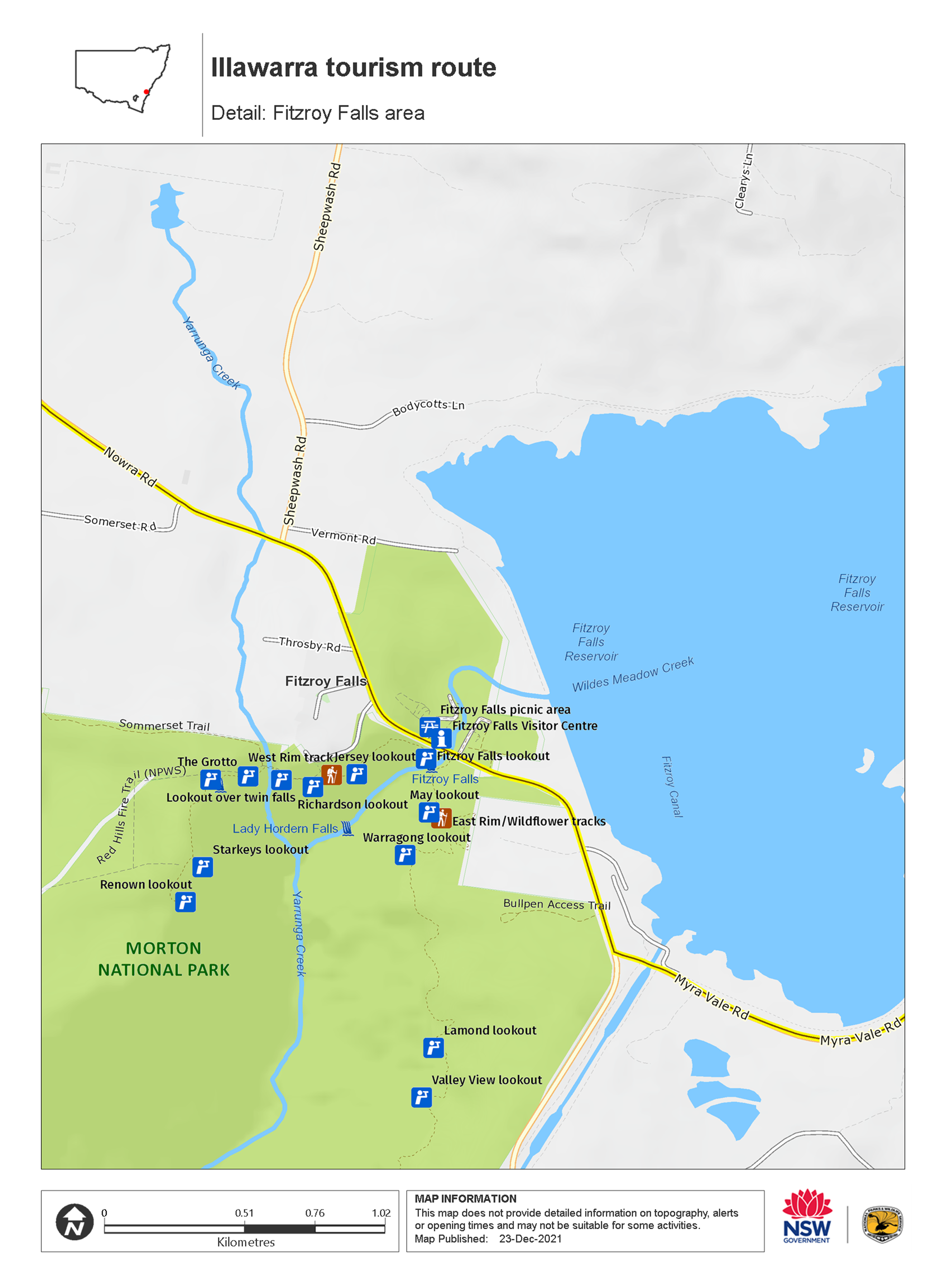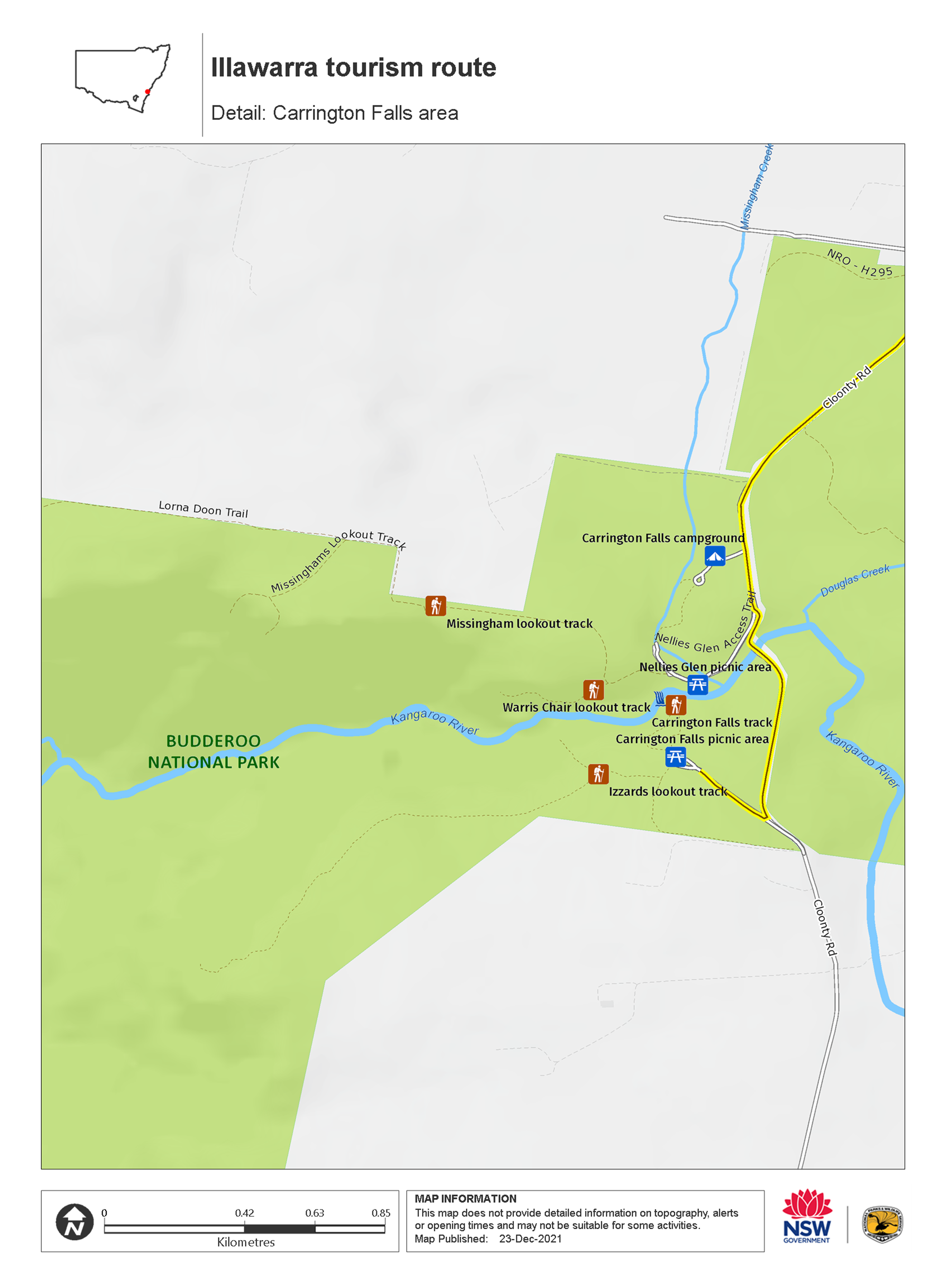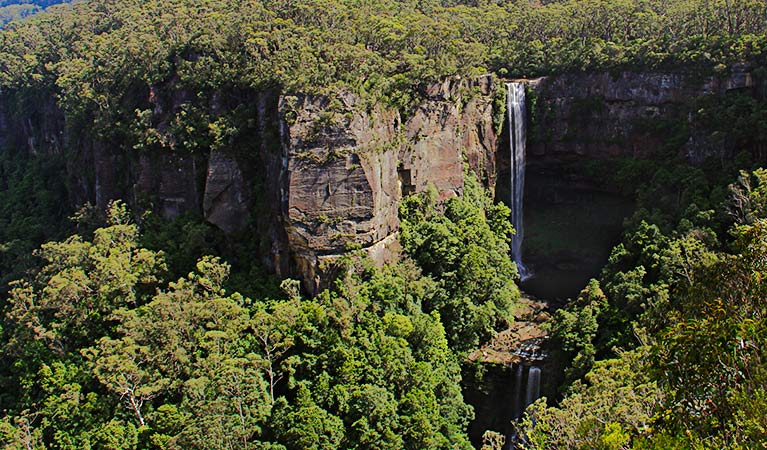Illawarra tourism route
Barren Grounds Nature Reserve
Overview
See the best of the Illawarra and Southern Highlands touring this scenic driving route. Pack up the car and set off on a road trip from Bowral to Fitzroy Falls and beyond.
- Where
- Barren Grounds Nature Reserve in South Coast
- Distance
- 120km one-way
- Please note
- If you’re stopping for a swim along the way, please take care in the water and please supervise children at all times.
- Be sure to bring drinking water with you, along with supplies for your vehicle.
- A current NSW recreational fishing licence is required when fishing in all waters
Take in the beauty of the Southern Highlands, Illawarra and Morton National Park from the comfort of your car on the Illawarra tourism route.
After fuelling up with petrol and a cuppa in Bowral take Nowra Road to Fitzroy Falls, travelling through the rolling hills and pretty pastures of farming country. Stop to walk to the falls and collect maps from the Fitzroy Falls Visitor Centre, then continue on to Belmore Falls, absorbing striking views over the sandstone escarpment and deep valleys as you drive.
From Belmore Falls in Morton National Park, drive through lush rainforest to Robertson; be sure to stop and enjoy a range of cafés, restaurants and bakeries in Robertson.
Stopping for a family photo in front of the Big Potato is a must, and then continue down Jamberoo Mountain Road via Carrington Falls in Budderoo National Park. Enjoy a picnic and the fantastic lookouts at Barren Grounds Nature Reserve before making your way to lovely Kiama. Check out the blowhole, go fishing or relax in one of the seaside cafes.
Then, whenever you’re ready, return to Sydney via Wollongong or head up Macquarie Pass to Bowral and on to Canberra or Sydney.
Map

Map

Map

Map legend

Local alerts
For the latest updates on fires, closures and other alerts in this area, see https://www.nationalparks.nsw.gov.au/things-to-do/driving-routes/illawarra-tourism-route/local-alerts
General enquiries
- National Parks Contact Centre
- 7am to 7pm daily
- 1300 072 757 (13000 PARKS) for the cost of a local call within Australia excluding mobiles
- parks.info@environment.nsw.gov.au
Park info
- in Barren Grounds Nature Reserve in the South Coast region
Barren Grounds Nature Reserve is always open but may have to close at times due to poor weather or fire danger.
Visitor info
All the practical information you need to know about Illawarra tourism route.
Maps and downloads
Visitor centre
-
Fitzroy Falls Visitor Centre
1301 Nowra Road, Fitzroy Falls NSW 2577 - 9am to 4pm daily. Closed Christmas Day.
- 02 4887 8270
Learn more
Illawarra tourism route is in Barren Grounds Nature Reserve. Here are just some of the reasons why this park is special:
Go wild for flowers

Barren Grounds Nature Reserve is famous for its heath wildflowers in spring and summer and flowering banksias in winter. The heathland is also one of only 4 large areas of heath on the NSW South Coast, making it an important habitat for many species of plants and animals. A large number of threatened or regionally rare ferns and other species also occur in wet sheltered sites below the escarpment, including several species of filmy fern. Around 180 bird species can also be found here, including honeyeaters, southern emu wrens, lyrebirds, crimson rosellas, cockatoos and grey currawongs. If you're really lucky, you might even spot the bright green ground parrot or an eastern bristlebird. In fact, it was to protect these two threatened heathland birds that Barren Grounds Nature Reserve was set up in 1956.
- 6-day birding and natural history tours Explore the beauty and diversity of Australian wildlife at Sydney’s doorstep on this 6-day tour with the knowledgeable guides of Inala Nature Tours. Visiting parklands, you'll see amazing birds, mammals and reptiles in their natural habitat.
- Cooks Nose walking track Stroll through the park's rich heathlands on Cooks Nose walking track and you’ll be rewarded with striking scenic views from the escarpment overlooking Kangaroo Valley.
Historic heritage

Barren Grounds Nature Reserve holds a very special place in the history of conservation in NSW, as it was the third faunal reserve to be gazetted under the Fauna Protection Act. Led by early conservation leaders like Myles Dunphy, Paddy Pallin and Allen Strom, it was protected in 1956. Since then, it has been an important place for researchers and students alike to record and learn about the incredible biodiversity of this area. The stone building at Barren Grounds picnic area - once known as The Lodge - was used for accommodation by researchers and honorary rangers.
Plants and animals protected in this park
Animals
-

Spotted-tailed quoll (Dasyurus maculatus)
The spotted-tailed quoll is the largest remaining carnivorous marsupial on the Australian mainland. It’s protected as a vulnerable species in NSW.
-

Eastern bristlebird (Dasyornis brachypterus)
The endangered eastern bristlebird is a shy, ground-dwelling songbird. Less than 2,500 birds are left in the wild, restricted to 3 isolated areas in eastern NSW and southern Queensland.
-

Eastern ground parrot (Pezoporus wallicus wallicus)
The eastern ground parrot is a beautiful, ground-dwelling native bird that lives in low heathland habitat along the NSW North and South coasts and escarpments. It’s listed as a vulnerable species in NSW.

